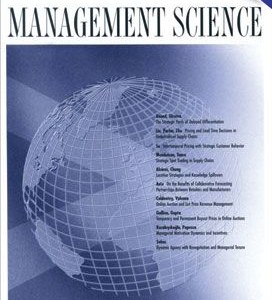
de Roon, F. and Szymanowska, M. (2012). Asset Pricing Restrictions on Predictability: Frictions Matter Management Science, 58(10):1916--1932.
-
Affiliated author
-
Publication year2012
-
JournalManagement Science
U.S. stock portfolios sorted on size; momentum; transaction costs; market-to-book, investment-to-assets, and return-on-assets (ROA) ratios; and industry classification show considerable levels and variation of return predictability, inconsistent with asset pricing models. This means that a predictable risk premium is not equal to compensation for systematic risk as implied by asset pricing theory. We show that introducing market frictions relaxes these asset pricing moments from a strict equality to a range. Empirically, it is not short sales constraints but transaction costs (below 35 basis points) that help to reconcile the observed predictability with linear portfolio return-based factor models, and partly with the durable consumption model. Across the sorts, predictability in industry returns can be reconciled with all models considered with only a 25 basis point transaction cost, whereas for momentum and ROA portfolios, up to 115 basis points are needed